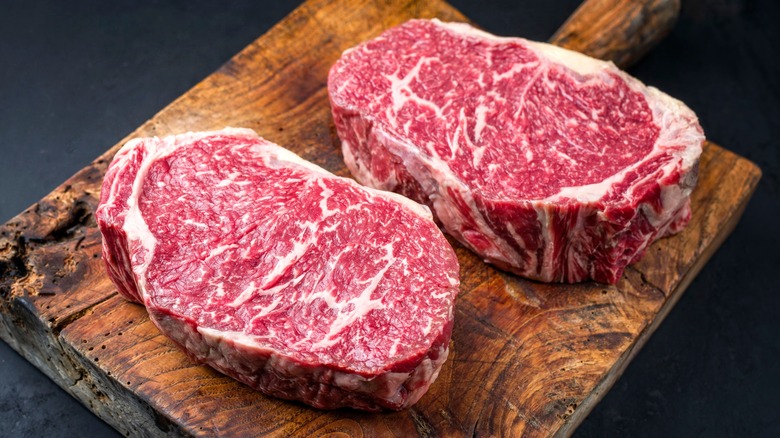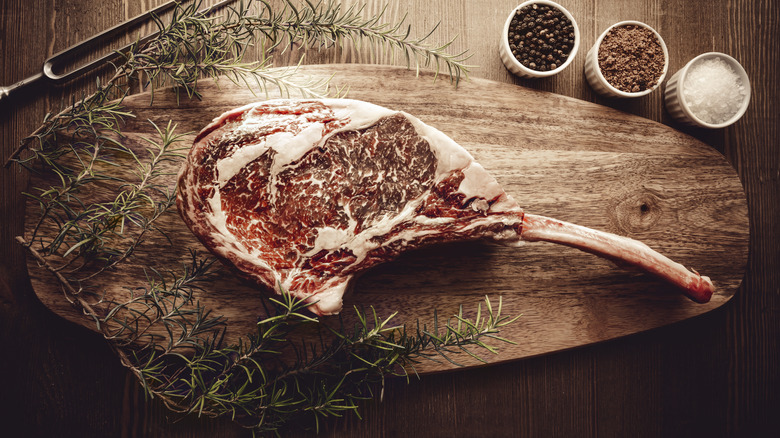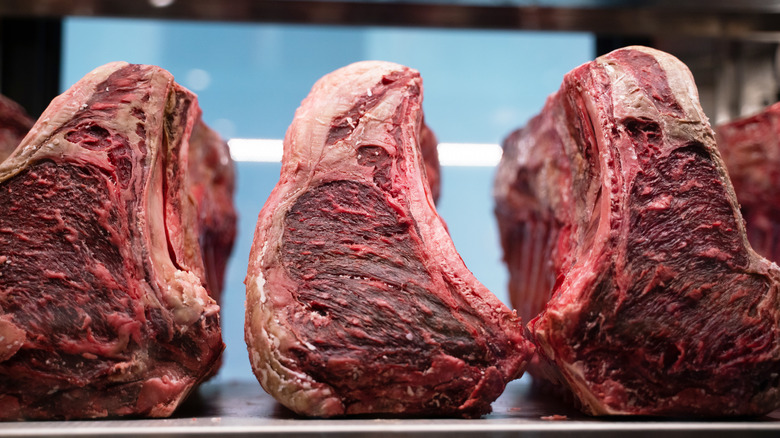The Reason You Should Avoid Dry-Aging Smaller Cuts Of Meat
These days, dry-aged meat is all the rage. By dry-aging a piece of meat, you create a stronger, denser flavor than just throwing those steaks on the grill. It also becomes more tender and therefore easier to chew. However, not every cut of meat should be dry-aged. If you have smaller cuts of meat, then you should probably reconsider dry aging them and go with more conventional methods.
You see, it's all to do with the surface area. When you dry age meat, you're removing moisture, which causes it to decrease in size. So, if you're already dealing with small cuts of meat, then your backyard grill-out is about to look pitiful. Likewise, when you dry age meat, it forms something called a pellicle. Think of this as either a cheese rind or wax — it's there to protect the inner layer of meat. However, you should probably remove this before cooking as it's not very appetizing. If your meat is small, then you have even less to work with after you cut the pellice off.
If you're not working with much meat, dry-aging is just not worth the trade-off when it comes to tenderness or flavor. Consider dry aging these cuts instead.
Best meat to dry age
If you're just planning to buy dry-aged steaks from a butcher, then you don't have to worry about the size as the meat as been previously dry-aged and then sliced accordingly. However, if you want to dry age yourself, then you should look to purchase as big a piece as possible. In particular, people often dry-age entire sub-primal cuts. This prevents many of the issues mentioned above. You should look to buy the entire tenderloin or top round to dry age.
From there, the best meat to serve is often obvious to many steak lovers — the ribeye. This cut stands a step above the rest given its natural tenderness and marbling. Ultimately, you should confirm with your butcher that you're purchasing the right sub-primal cut. Ribeyes are typically found around the lower half of the cow's ribs. Other cuts you may want to consider include the fillet and rump. Both have a strong meaty taste that can benefit from dry aging.
You can consider dry-aging certain types of seafood as well as pork. However, beef typically works best for this method as the fat in the meat gives dry-aged beef its tenderness.
Alternatives to dry aging
If you've already purchased those ribeyes, then you're probably wondering what are you to do other than experience buyer's remorse. Fortunately, you have a few options besides just tenderizing your cut and slapping it on the grill. For one, you can always try fake dry-aging your steak. It will give the meat a similar flavor and tenderness without the same loss of moisture.
You will need a rice grain called koji for this to work. Use a blender or food processor to turn the grain into a fine mixture. Cover your steak with it and let it sit in the fridge for a couple of days. The mixture should begin to break down some of the more fatty parts of the steak, creating a texture that's similar to dry-aged steak. Meanwhile, the koji will also heighten the flavor of your meat, especially when combined with your favorite steak seasoning. Alternatively, you can try wet-aging your steak, which involves vacuum sealing the piece of meat for several days. The steak will naturally tenderize during this time, but unlike with dry aging, you don't lose any moisture, making it a better fit for smaller cuts.


